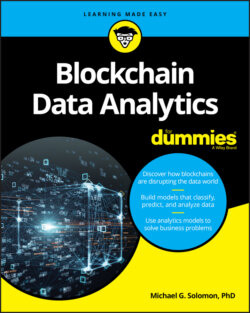Читать книгу Blockchain Data Analytics For Dummies - Michael G. Solomon - Страница 22
Predicting behavior
ОглавлениеAlthough the capability to classify entities to identify groups of similarity can be valuable, analytics can also make predictions. Past behavior is a strong indication of future behavior. Humans tend to repeat actions and decisions, so you can use models that identify patterns to predict future actions. The capability to predict future actions can have tremendous value to organizations. If an organization can determine items that tend to be purchased together frequently, it can use that information to make additional purchase suggestions.
You’ve undoubtedly seen frequent item analysis results when you shop online. When your favorite website recommends that you purchase an additional item, and that item makes sense, it's because other people have bought that same item set in the past. How does the website know that? It used analytics.
One of the common analytics models you learn about in Chapter 7 and build in Chapter 11 is regression. Don’t worry about the name right now (or the math). Regression is kind of like calculating the slope of a line on steroids. A regression model basically examines your data and figures out a line (or a curve) that matches the data you’ve seen. After you can graph your data, you can use that graph to guess what will happen based on new input data.
Let’s see how that can help. Figure 1-2 shows a linear regression model built on audition data and resulting score data. This example comes from an example you use to build this model in Chapter 11.
FIGURE 1-2: Linear regression model using hours practiced and audition scores data.
Here’s the explanation you see again in Chapter 11: Suppose you're helping student musicians prepare for honor band tryouts. You've collected historical data on how many hours a week each student practiced, whether the student was accepted in the honor band, and what audition score each student earned. As you would expect, a linear correlation exists between hours of practice and audition score: The more a student practiced each week, the better score that student earned at his or her audition. A linear regression model can predict any student’s audition score if you know how many hours that student practices each week. If you have a student who practices 30 hours per week, you could expect that student to earn a score of about 60 on the audition.
Regression models can help to accurately predict future actions. Using data to know what’s next can be worth its weight in gold when making business decisions. (Yeah, I know data doesn’t have weight, but you get the point.)
